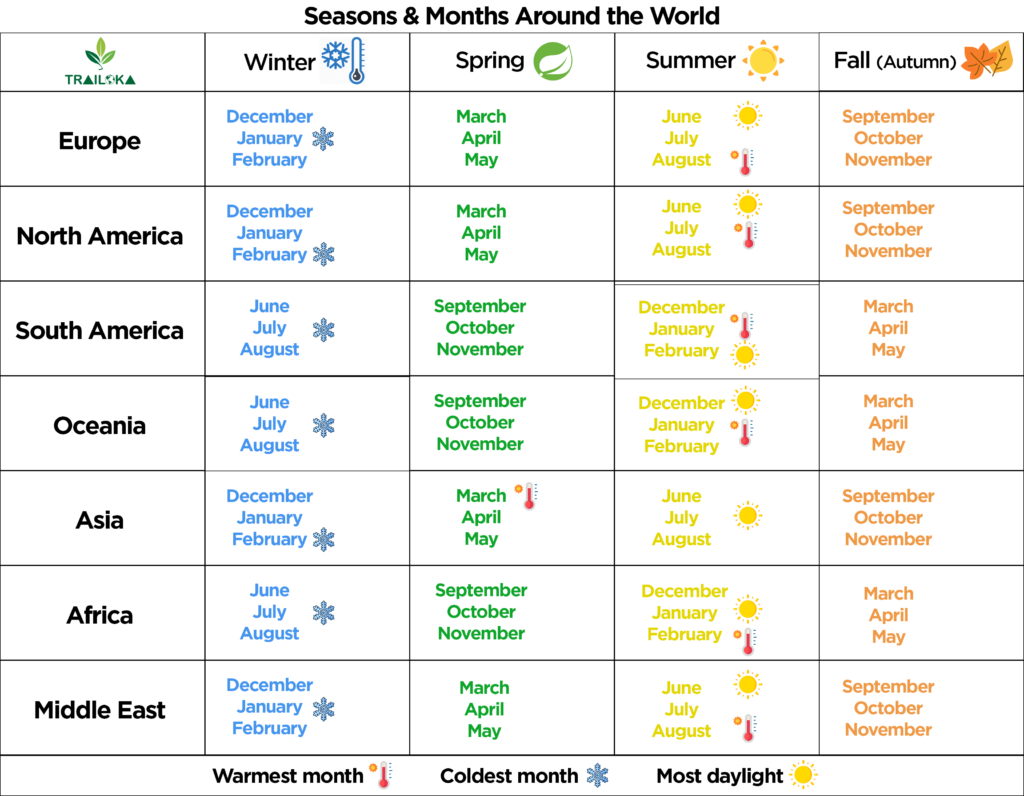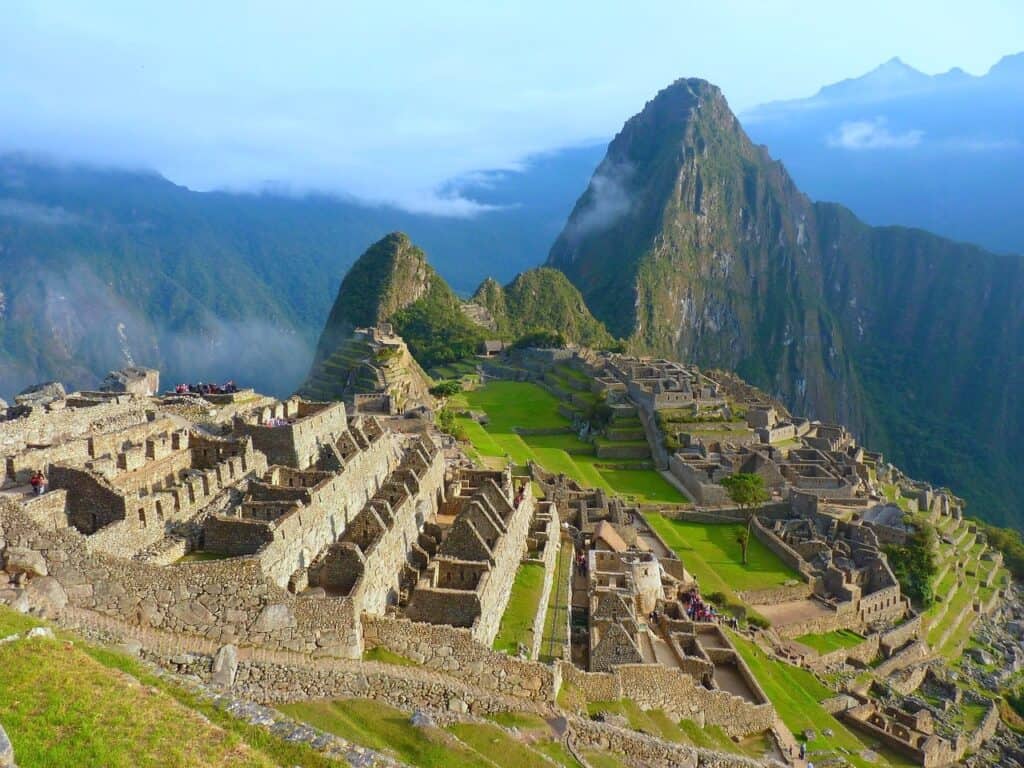Travel Seasons

As a traveler, you must choose the right time and destination for your safety and enjoyment. So Trailoka offers the best time to visit with 4 seasons to select the country around the world. The four seasons is winter, spring, summer and fall (Autumn). Different seasons bring forth different levels of weather. Plants and animals both suffer changes in response to climatic shifts.
Sometimes very difficult to remember the monthly climate season according to country, so now you can find within one click the correct month, season, and more resources with your input. Let’s search for your destinations.
Winter
Winter is the coldest season of the year in both polar and warm climates. Winter occurs after autumn and comes before spring. As the Northern Hemisphere experiences winter, the Southern Hemisphere enjoys summer. There is snow and subzero temperatures in several places during the winter. The changing of the seasons is caused by the axial tilt of Earth winter occurs when one hemisphere faces away from the Sun. The beginning of winter is regarded differently by various civilizations, with some even basing their definition on the start of colder weather.
At the winter solstice, the Sun’s elevation is at its lowest point with the North or South Pole, meaning that it is at its farthest point below the horizon in that direction. The day and night lengths are at their extremes on this day, with the opposite trends continuing as the season proceeds following the solstice.
Spring
Spring, often known as springtime, is the season that follows winter and precedes summer. A gradual increase in temperature marks the Spring season. As the Northern Hemisphere enters spring, the Southern Hemisphere enters autumn. Days and nights are roughly equal in length during the spring equinox, and this continues until the Summer Solstice in June (Northern Hemisphere) or December (Southern Hemisphere) when the days become longer and the nights shorter (Southern Hemisphere).
The words “spring” and “rebirth” are often used to describe the season of spring and the associated feelings of regeneration, growth, and hope accompanying it. Many cultures have held celebrations and rites to honor the arrival of spring because of the season’s significance in agriculture. Many European languages have words for spring that refer to planting seeds. All plants, whether wild or cultivated, awaken from their winter slumber at this time of year. In reaction to the warmer weather, animals emerge from their winter slumber or hibernation and resume their reproductive activity; likewise, birds migrate to the poles.
Summer
Following spring and before fall, summer is the warmest of the four temperate seasons. The year’s longest day comes around or near the summer solstice when the sun rises the earliest and sets the latest. The number of daylight hours is increasing, and the number of dark hours decreases as the season proceeds following the solstice. As the Northern Hemisphere experiences summer, the Southern Hemisphere experiences winter.
Only in the middle and high latitudes is a significant temperature difference between summer and the other seasons. The equatorial regions have relatively little changing temperatures throughout the year. Summer is the season of maximum plant growth in areas that receive sufficient summer rainfall, and this is reflected in the way European languages conceptualize summer. Many different cultures have commemorated the summer harvest with festivals and rites because of its significance to their way of life.
Fall (Autumn)
Due to the time of year when leaves start to fall from the trees, autumn is often referred to as fall in American and Canadian English. The change from summer to winter occurs in the fall outside of the tropics. The autumn season is marked by a noticeable reduction in daylight hours and a sharp decline in temperature. As the season proceeds until the Winter Solstice, day length shortens and night length lengthens. One of their most distinctive characteristics in temperate areas is the stunning shift in color of deciduous tree leaves as they get ready to fall.
Only in middle and high latitudes can the fall temperature change from summer heat to winter cold occur; in tropical locations, temperatures often vary little throughout the year. Autumn is only very briefly present in the arctic areas. To prepare for the upcoming winter, animals accumulate food in the autumn, and those with fur frequently develop thicker coats. To escape the chilly weather, many birds travel toward the Equator.
Learn the science behind why the leaves turn colors in the fall. Watch it in the embedded video below.
Seasons & Months Around the World

Related Post
Best Time of the Day to Visit Vatican – Read this before Visit!
The Vatican is a significant tourist attraction in Rome, Italy, and has been the center…
Best Time of Year to Visit Machu Picchu – [Climate & Regions]
A famous historical destination around the globe is Machu Picchu. Visitors from all around the…
What Is The Best Time To Visit Nicaragua? Crucial Factors Discussed
Are you wondering the best time to visit Nicaragua? Unfortunately, Nicaragua does not put it…
Best time to visit Grenada (Spices of the Caribbean)
Grenada(The Spice Island) is positioned in the most beautiful southern Caribbean, and that has an…



